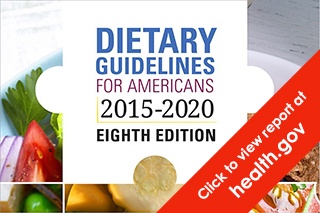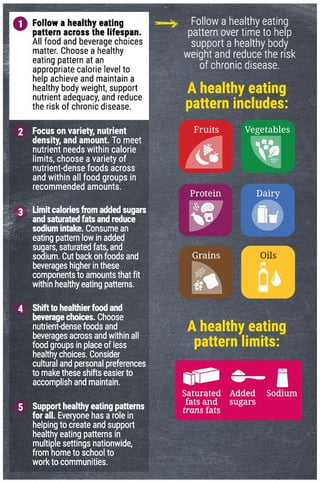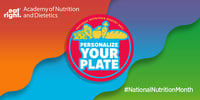 The 2015-2020 Dietary Guidelines for Americans was released today. The updated nutritional guidelines encourage Americans to adopt a series of science-based recommendations to improve how they eat to reduce obesity and prevent chronic diseases like Type 2 diabetes, hypertension, and heart disease.
The 2015-2020 Dietary Guidelines for Americans was released today. The updated nutritional guidelines encourage Americans to adopt a series of science-based recommendations to improve how they eat to reduce obesity and prevent chronic diseases like Type 2 diabetes, hypertension, and heart disease.
“Protecting the health of the American public includes empowering them with the tools they need to make healthy choices in their daily lives. By focusing on small shifts in what we eat and drink, eating healthy becomes more manageable,” said Secretary of Health and Human Services Sylvia Burwell.
The newly released 8th edition of the Dietary Guidelines reflects advancements in scientific understanding about healthy eating choices and health outcomes over a lifetime. This edition recognizes the importance of focusing not on individual nutrients or foods in isolation, but on the variety of what people eat and drink—healthy eating patterns as a whole—to bring about lasting improvements in individual and population health.
The overarching recommendations are:- - Follow a healthy eating pattern across the lifespan.
- - Focus on variety, nutrient-dense foods, and amount.
- - Limit calories from added sugars and saturated fats, and reduce sodium intake.
- - Shift to healthier food and beverage choices.
- - Support healthy eating patterns for all.
A Healthy Eating Pattern
Healthy eating patterns support a healthy body weight and can help prevent and reduce the risk of chronic disease throughout periods of growth, development, and aging as well as during pregnancy. The guidelines recommend Americans eat:
- A variety of vegetables, including dark green, red and orange, legumes, starchy and other vegetables
- Fruits, especially whole fruits
- Grains, at least half of which are whole grains
- Fat-free or low-fat dairy, including milk, yogurt, cheese, and/or fortified soy beverages
- A variety of protein foods, including seafood, lean meats and poultry, eggs, legumes (beans and peas), soy products, and nuts and seeds
- Oils, including those from plants: canola, corn, olive, peanut, safflower, soybean, and sunflower. Oils also are also naturally present in nuts, seeds, seafood, olives, and avocados
The guidelines also recommend limiting saturated fats and trans fats, added sugars and sodium. Alcohol should be consumed in moderation.
A New Paradigm
The Dietary Guidelines recognizes the need to create a new paradigm in which healthy lifestyle choices at home, school, work, and in the community are easy, accessible, affordable, and normative. The guidelines include strategies to help professionals in leading disease-prevention efforts within their organizations and communities to make healthy eating and regular physical activity an organizational and societal norm.
For more information and resources, click here.











